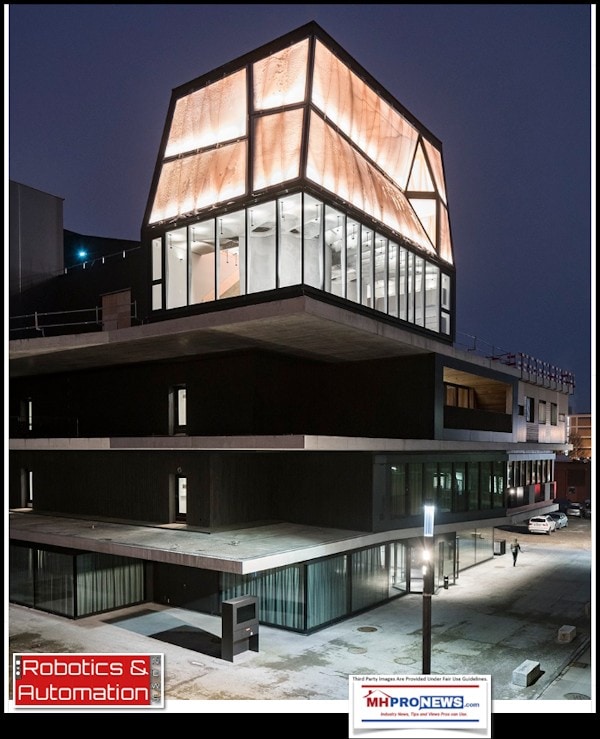
“DFAB HOUSE has officially opened…on the NEST building of Empa and Eawag in Dübendorf. It is the world’s first inhabited “house” that was not only digitally planned, but also – with the help of robots and 3D printers – built largely digitally,” says the DFAB House website.
In a media release in February 2019, the Swiss organization said “Research and industry learn from each other” explaining that “The sixth unit in the NEST research and innovation building is a good example of how cooperation between researchers and industry can produce forward-looking solutions. “In implementing a construction project like DFAB HOUSE, traditional construction methods meet new concepts of the digital world. The path from the digital drawing board to an actual building has challenged both scientists and experts from industry. Through a constructive dialog, something truly visionary can now be put into practice; hopefully it will soon be used broadly in the construction industry,” says Empa CEO Gian-Luca Bona.”
DFAB used 3D printing, a technology that MHProNews has spotlighted several times in recent years.
It is also a technology that HUD Secretary Ben Carson has elevated, along-side manufactured homes. See an example in the right-of-center FBN cable news interview video, below.
“Erecting a new building ranks among the most inefficient, polluting activities humans undertake,” said QZ about this new DFAB project and related media release, adding “The construction sector is responsible for nearly 40% of the world’s total energy consumption and CO2 emissions, according to a UN global survey (pdf).”
That UN generated report PDF ought to be pondered by HUD Code producers, most notably independents, because depending on who the next administration might be, standards like these could potentially regulate some producers out of business.
A PDF of the Swiss team’s press release is found linked here.

Beyond that, HUD Code builders, sellers, and community operators should consider what the implications are of the arguably artificial manipulation of the industry in ways that foster industry consolidation instead of growth.
That noted, in the related reports below the offers and notices, there are several examples of robotics and 3D Printing that have been previously reported.

Note that the reports linked below that deal with automation, AI, robotics, and 3D printed housing are not all in date sequence. That’s your final, ‘almost midnight’ installment of manufactured, modular, and prefab “Industry News, Tips, and Views Pros Can Use” © where “We Provide, You Decide.” © ## (News, analysis, and commentary.)

Soheyla is a managing member of LifeStyle Factory Homes, LLC, the parent company to MHProNews, and MHLivingNews.com. Connect with us on LinkedIn here and
Related Reports:
Click the image/text box below to access relevant, related information.
Blueprint Robotics Disruptive Aim at Modular Housing, and Factory-Building Technology
Billion Dollar Startup Modular Builder, Using Robotics, Could Soon Rival Clayton Homes’ Total Sales
Driverless Trucks Coming to Big Box, Will Emerging Tech Impact Manufactured Housing Deliveries?
Introducing Hyundai Engineering Projects, Donates Disaster-Resistant Modular Homes
New HUD Code Manufactured Home Production Center with Automation Capacities Opened
Ross Kinzler, Others Ask – What Jobs Will Remain? Are AI and Automation Taking Over?
U.S. Labor, China-American Trade, Warren Buffett, and Housing – High Cost of Short-Range Thinking?

























